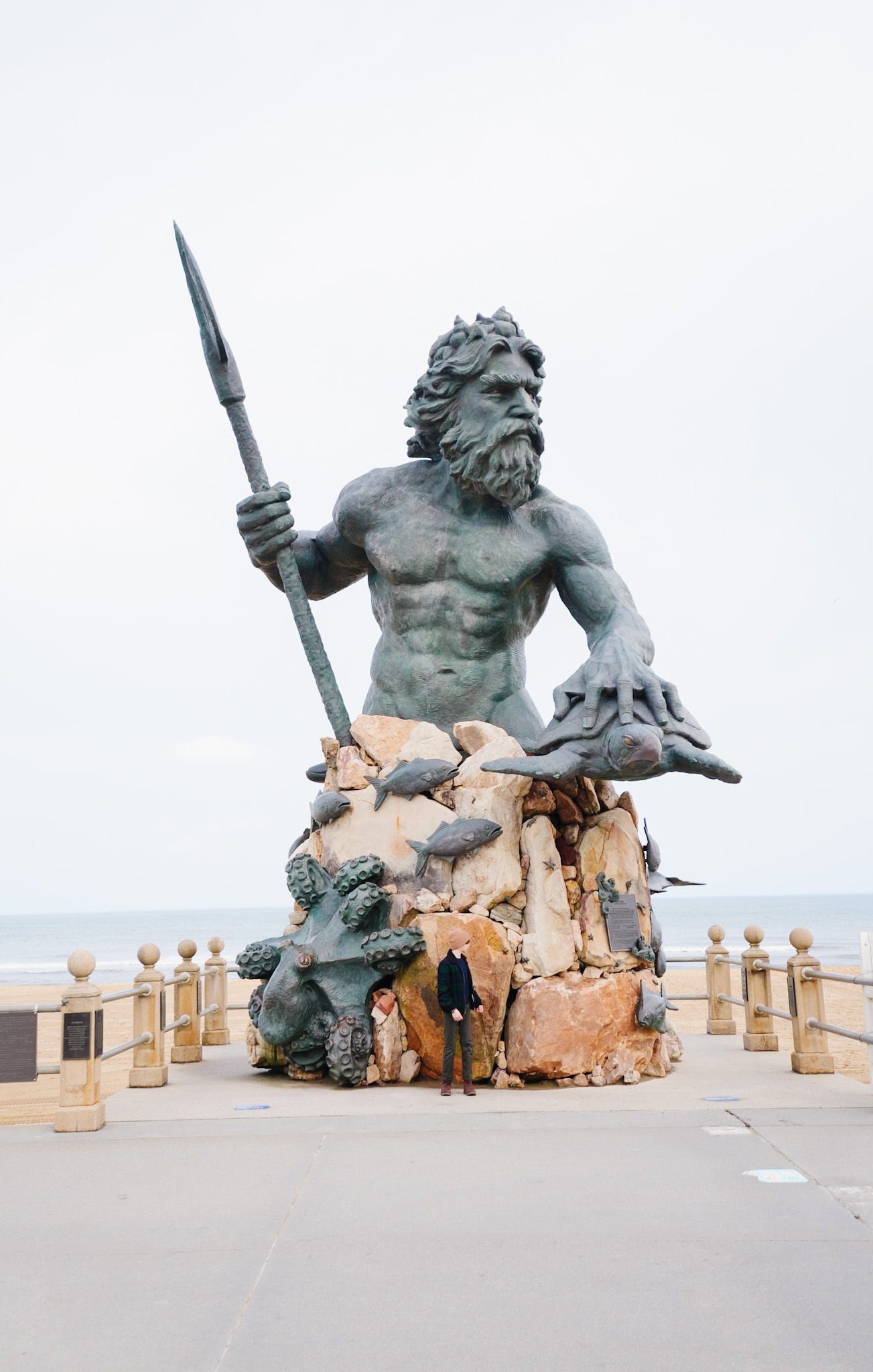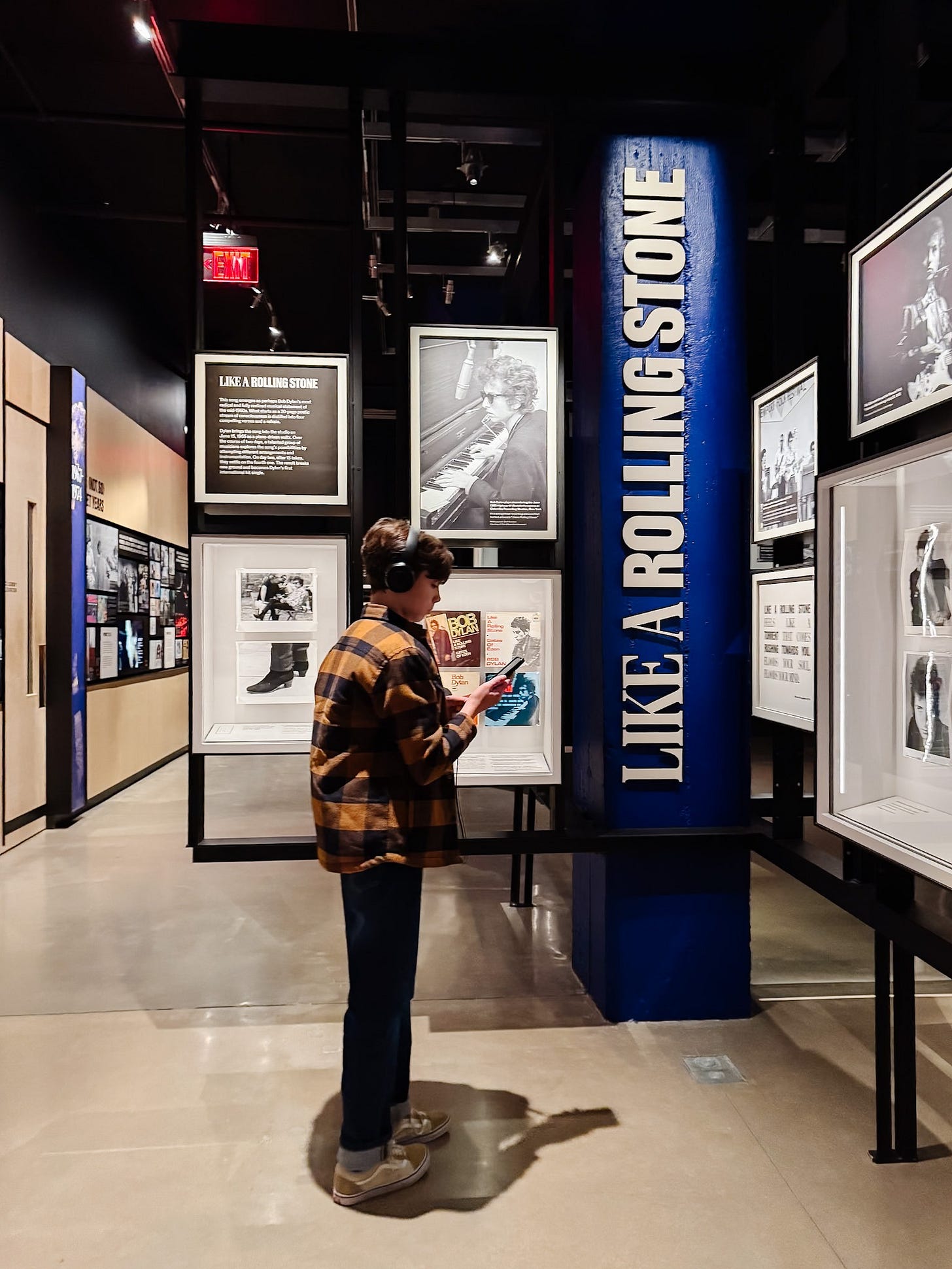Two Months on the Road: My Top Five Lessons of Homeschooling From the Road
Field Trip Newsletter #95
Hello!! I’m finally back from working on my latest book. I have missed writing here, but I’m finally caught up, mostly, with work and can get back on a regularly scheduled writing schedule. I have so many fun things that popped into my head after driving 11,766.10 miles, to share here. So, buckle up and please share this newsletter with a friend, if you are so inclined. I would appreciate it.
Thanks so much for reading here! - Erin Austen Abbott
We have been homeschooling for two whole years now, but we have been working towards letting go and learning from anywhere since my son was born. Until he was a little older and ready for more independent studies, we had him in traditional school. Now, at almost 13, I'm able to give him his assignments, and he is self-motivated to learn.
As a freelance travel writer, photographer, and author, my job requires me to travel and explore constantly. I've built my world to include my son and the ability to come along for the journey. This past spring, he and I set out on a two-month road trip while I was taking the photos for my new book. We visited 34 states and stopped for an adventure just about everywhere along the way.
Lessons from the road:
*Roadschooling and homeschooling are often used interchangeably throughout this post.
1. It's ok to change course. You don't have to stick to the exact schedule that you made for your child. I create a schedule each semester that outlines my goals for my son, as well as the subjects I want to cover, knowing that things may change on any given day. I have an umbrella of work we call "morning work." My son wakes up and does that work on his own each day. Reading for 30 minutes, studying Japanese, writing in his journal, practicing cursive, and 30 minutes to choose between drawing, music, more reading, or fiction writing. When we were traveling, his morning work was structured in a way that allowed me also to complete any work I needed to do before we left the hotel each morning. He knew the routine so well that I didn't have to guide him. I set up his other subjects similar to a college schedule, with learning happening every other day rather than daily. If we don't cover a subject on the allotted day, I look for opportunities to cover it on the road. It might mean finding a history museum or stopping to read historical markers. We listened to a podcast about the Tulsa Race Riot while driving across Oklahoma. We sought ways to connect learning to place wherever we went.
2. Give your child the tools to document their travels. I have my son write about his travels each morning as part of his morning work. What he doesn't fully understand is that he is also working on his language arts each morning, too. Yes, he's writing about what he's doing, seeing, and experiencing. However, he's also learning about sentence structure, spelling, proper English, and other aspects of language. I read through each journal entry, and we discuss each misspelled word, how to make each entry more dynamic, how to use more descriptive language in writing, his tone, and so on. Between the time we spend on his journal, the reading he does, and the fiction writing, it's so much better than any worksheet he'd most likely be doing at our local public school. I also gave him his own camera to document our travels from his own perspective, and he has a recorder on his MP3 player for when there's a sound he wants to save to use as a sample in one of the songs he's working on.
3. Life skills should still be taught on the road. A significant aspect of homeschooling is the time and opportunity to teach life skills to our children. Well, when you're on the road and aren't home to add these into your day-to-day routine, what do you do? Here's a short list of life skills my son helped with on the road:
Doing laundry either at the hotel or at a laundromat.
Checking the air pressure in the tires.
Helping keep track of when to get an oil change.
Getting the cart and taking the luggage to the room each night.
Starting the fire at each campsite when we camped.
Helping with groceries when we stayed in an Airbnb.
Keeping his area of the car tidy and void of trash.
4. Learning to navigate doesn't have to be a lost art. Yes, we do use our GPS when we travel, but I also give my son maps to track where we are going. As an AAA member, I can order free maps, so I love to get maps of places we're going for him to follow along with. There's no test attached to this, but at the end of the day, he's learning hands-on geography, and that's invaluable to me.
5. Offer your child educational options to choose from, allowing them to be part of the planning for a road trip. I love for my son to feel included in the planning of our travels. However, I also want him to make choices that will benefit his studies. This means, as his teacher, I must give him options to select from that meet my criteria for learning opportunities. It might mean I find two museums for him to pick from or restaurant options with food from other cultures, where we can spend the meal learning about that country. It might be letting him select which hiking trail we go on or if we listen to a science, history, or civics podcast for the drive. You can offer your child preselected educational options while allowing them to help choose which path you take.
At the end of the day, stop at the wacky roadside attraction and find the best ice cream in each town. I promise all of it is educational in some form. Each day, they are expanding their minds a little further with each new location and adventure. It may not all look academic, but there is fun and even merit in the mundane. - Erin












